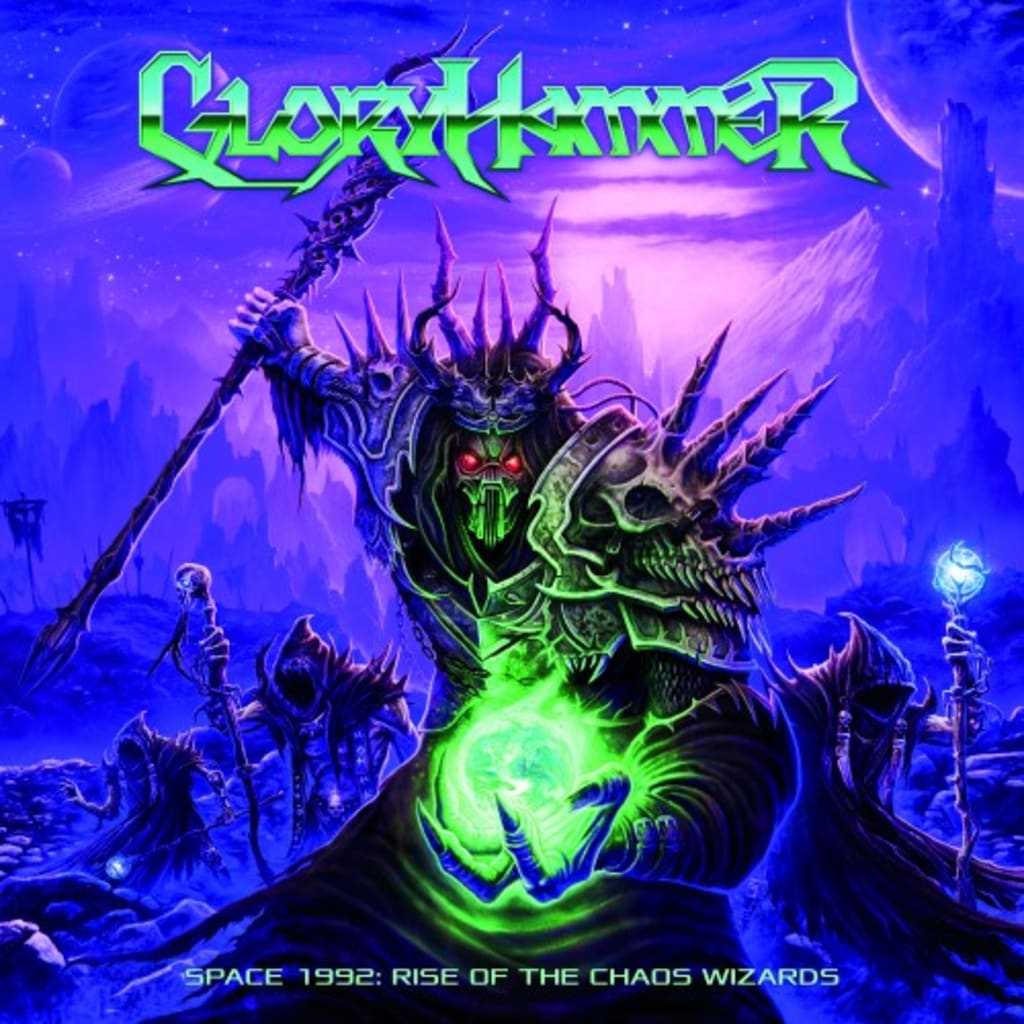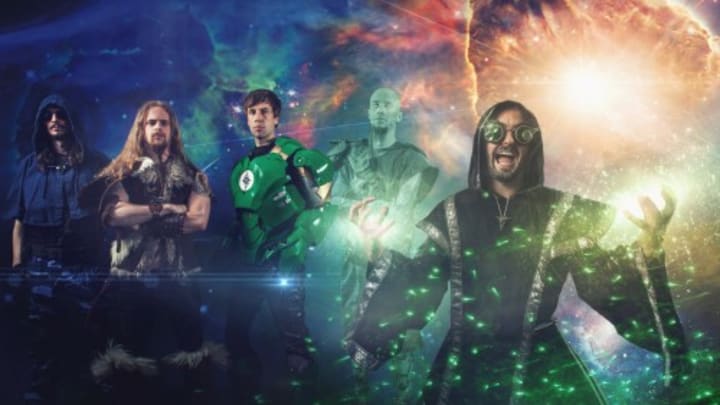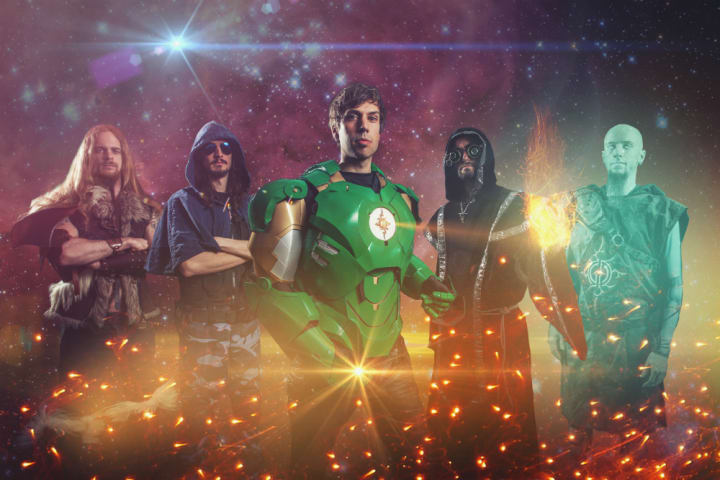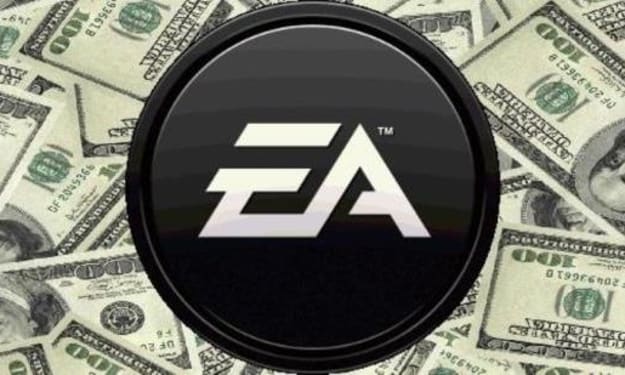
If you have not yet appreciated the glorious cheese that is the album we'll be exploring today, I strongly recommend it.
Being someone who works in both music and writing, I have run into a surprising amount of people who don't see the crossover between the two subjects. It is my opinion that as a culture we let pop radio dictate our idea of what music is, or should be. A collection of singles with no through line yet all sounding the same. When in reality, good music is good literature and can be experienced or enjoyed the same way creative writing in a novel or film can be.
Instead, we should like how music is actually created and released. The LP (length-play) or album is the mode by which music is transferred from the studio to the shelves at Walmart. Some of the most successful albums of all time are what are called “concept-albums.” An album where each track has more meaning when the album is played in its entirety than if it was just listened to individually. If the term for an album is Length-Play then shouldn't that be the case for any good album, that as a whole it is better than as a single?
Assuming that that is true, then we should look at albums when trying to determine what makes good writing for music. A good album is the same thing as a good novel, it is a form of literature. From an album, a listener can extract a theme, sense of characters and development, and the structure of the album itself which guides the lister on the journey. We can do this as a case study and break down an album to see how it is a piece of creative writing. We will be doing that by looking at a modern album by a group by the name of Gloryhammer.
Defining Our Subject

Promo art for Space 1992: Rise of The Chaos Wizards by Gloryhammer
The album is Space 1992: Rise of the Chaos Wizards, released in 2015 the album tells an epic fantasy set in space in “The distant future of the year 1992.” The album was well received both by critics and consumers and reached the 18th position on the UK Rock and Metal charts. Marking as both a commercial and critical success (Metallist 2015).
Not only was the musicianship praised but the concept and narrative of the album were so outlandish and well-crafted that it won over harsher critics (Angry Metal Guy, 2015). There was some division between critics who liked or disliked the concept but the defining factor seemed to be those who got the joke and those who did not. The joke being that everything is so serious all the time that we can't be absurd and have fun anymore, adding some irony to the reviews.
This case study is using Space 1992 as a subject because it is an example of power metal. The genre is known for its storytelling being a focus already. This album is almost of a parody of the genre by pushing its story so blatantly forward, that it's surprising that the musicianship can match the absurdity so perfectly and still be excellent. These qualities have made the album a favorite of mine and also make it easier to break apart in a short amount of time.
From a marketing standpoint, good creative writing is a large part to selling. The evidence is in our current entertainment. Gloryhammer sold this album on the theme of over-the-top fantasy and nostalgia for 1990s bad science fiction and power metal. Most movies that garner commercial success are either over-the-top action (Marvel) or remakes of movies from the past (Disney). As a society, we are drawn to the fantastic and our childhood, when we believed the fantastic was possible. Hitting on both of those elements puts the album in a great starting position.
Understanding Lyrical Concepts
Looking at Space 1992 as a successful example of music, we can begin to form an idea of looking at music like literature through the album. Being a writer who also works as a musician, there are a few elements of my working mindset that I feel are exemplified particularly well by this album.
- Album concepts are about storytelling
- Approach music with a theme in mind
- Music has movements like movies and novels have acts
- Characters are king
Intentionally Ridiculous

Promo Art for Space 1992: Rise of the Chaos Wizards
Space 1992 was designed to be intentionally ridiculous. Much like the Warhammer 40k universe, it is epic and intense because it is fun, and is not meant to be a grim reflection on human psychology. The idea of wizards in space fighting magical holograms and super-powered Hollywood actors does not lend itself to realism.
The fact that everything is so over the top is a contributing factor to the album's success. The tonal consistency gives the reader a clear idea of what to expect. Wherever the narrative of the album goes it feels at home in the track list. Have you ever read a story or watched a movie and then something so out of character happened, or the tone took a massive shift, and it became impossible for you to believe the story?
There is a concept called the fictive-bubble. Once something out of character happens or the tone breaks, the bubble bursts, and the audience is pulled out of immersion. Worse yet, it becomes near impossible to get them to trust the story again after that.
The same thing can happen with music. If a song breaks with the tone of the album the audience will recoil from the artist for breaking their trust in the album. What's worse, artists are often critiqued if one album breaks from the tone of their previous discography. If an artist can lose years worth of trust with their audience over an hour of work, how much more important is each four-minute interval for maintaining the trust for an hour?
Discerning the Album's Theme

Gloryhammer live. Taken from Distorted Sound Mag
Tone or aesthetic theming often ties into the underlying theme of the subject. For something like Space 1992 where it is so absurd simply because absurd is fun, it's clear where it is pulling from. It's looking back at our childhood, one of the key subjects writers and marketers target for theming because of how important our upbringing is in western culture. When we could have fun for the sake of being fun and things did not need to be all serious and intellectual. The name itself gives it away, for many in my circle, our love for the fantastic was born close to the year 1992.
Having a good theme goes a long way in the success of any work of writing. The theme makes the subject matter relatable. Simply put a reader will devour a subject that is relatable even if the overlying concept is absolutely absurd. The theme allows the underlying human emotion to come through and connects the artist and the audience (DIY MFA 2014). In Space 1992 even if the concept is outlandish and the lyrics nonsensical, because we connect with the artist in the mood of child-like fun, we want it to be so outlandish. We share that fantasy and laughter with the artist.
The consistency of the tone and transparency of the theme show how painstakingly crafted the narrative of Space 1992 is. Even if the words are nonsensical and the plot is not on par with A Song of Ice and Fire, the point is that was intentional and they took time to make sure it was all nonsensical.
While the plot of the album is not the next Tolkien, it is structured in much the same way as great fantasy novels are. This comes from how music has traditionally been written. The classics were composed as suites and symphonies. Long forms of music to be played all at once. Of course, it was designed naturally from one section to the next but each section contained an individual mood that contributed to the performance as a whole. The changing of moods created split the performance up into movements, which function much like an act in a writing.
While writing from formula is something I would never prescribe, there is something to good act structure. The whole hero's journey concept was founded on the idea that for whatever reason, the human brain is just naturally wired to appreciate a narrative told a certain way. Which is with a beginning, middle, and end. Marked with exposition, inciting incident, rise, climax, and fall.
When we look at Space 1992, it contains each of these elements. The first track lays the exposition. We are in the space and the year is 1992, the chaos wizards are returning. The second track is the inciting incident. Cultists attack, break the evil sorcerer out of prison and destroy the good guy's fortress. Then we have the rise as the Chaos Wizards gather power from a goblin king and the hero, Angus McFife XIII, rallies a set of heroes to a fortress in orbit around Mars. Finally, a climax and fall as the forces clash in the caves underneath the citadel of Dundee and Angus chases the wizard through a chaos portal to kill the wizard in hell.
The structure is basic and can certainly feel like they stole elements from different stories that have come before it, but that's because it works. They just took what makes decent fantasy and amped the cheese factor by an insane amount to make it unique.
The Characters Are King
Stories can be made or destroyed by their characters. If their characters are relatable and extraordinary, the audience will remember the story for years to come. Think John Wick, an Assassin with a history of working with the Russian Mob who is so experienced and proficient in dealing death that he himself is almost un-killable. Not relatable (At least I hope not). Or John Wick, the family man who is angry because a punk killed his dog, and is hoping to retire early and live out his golden years. There are a lot of people who could fit that description. The combination of these two personalities is what makes him so memorable.
Space 1992 capitalizes on memorable characters the same way classic fantasy does. The entire second act of the album is made up of Angus McFife XIII gathering up a set of characters.
A raging barbarian whose dream was to make it big in Hollywood. A resurrected hologram knight brought back to keep a promise. Unicorn-riding magical knights from a distant galaxy who are driven by their pride as protectors. Angus himself with a laser hammer entrusted to his family line by space angels fights to protect his home. The evil wizard with his army of demons believes he is fighting to end inequality in the galaxy.
Each character has a mix of absurd and practical attributes. They are both extraordinary and relatable. The way that Gloryhammer writes their characters is the way that characters have been crafted for literature for years. Bringing classic character development to the forefront of their album.
Other Examples
Even though we explored music as literature through an album as niche as Space 1992, there are plenty of other examples and mainstream successes that show the same level of writing in music. Space 1992 is just a piece of cheese soaked art that I feel needs more appreciation.
If we were to look at another album I could point to Life After Death. The posthumous release from The Notorious B.I.G. The album features a similar use of movements to change moods as the poet tells the story of the rivalry between the East Coast and West Coast scenes.
The characters are also designed for memorability. Biggie Smalls himself being real with real desires but with a bigger than life voice and life experience that is alien to many stands out as a unique character almost immediately. The subtle way he calls out other rappers makes them appear like side-characters in a story that Biggie is telling, which they are and he is.
Biggie Smalls was not only a master lyricist but a master story-teller. From Ready to Die to Life After Death, Biggie Smalls tells the story of himself and his place in the coast-to-coast rivalry. I would recommend his work for anyone who wants to see how good music is good literature.
Music as Literature
By looking at Space 1992: Rise of the Chaos Wizards by Gloryhammer it is clear how one can dissect music like literature. A good album will contain many of the same elements as good novels because the creative process is the same at its core. It's the art of creating a solid theme, matching it with memorable characters, and telling the story with a beginning, middle, and end.
To that end, a good music lyricist and a good creative writer should be one and the same. I would encourage and hope that everyone looks at music with a critical eye because that's how we drive art forward.
About the Creator
Tim T.K.
A sci-fi and comic book enthusiast who ended up writing short stories and comics himself. Having been classically trained in writing at Full Sail University Tim loves discussing the art form in detail. He also likes sharks.






Comments
There are no comments for this story
Be the first to respond and start the conversation.